Table of content
Introduction
Steaming is a culinary technique that has been revered for centuries for its ability to preserve the natural flavors, textures, and nutrients of ingredients. When applied to large seafood like lobsters, crabs, whole fish, and shellfish, steaming becomes an art form that demands precision. The question of how long to steam large seafood is critical, as overcooking can render meat tough and dry, while undercooking poses health risks. This article delves into the science and practicality of steaming large seafood, exploring variables such as species, size, thickness, and equipment to determine the ideal cooking times. By understanding these factors, home cooks and professional chefs alike can achieve tender, succulent results every time.
The Science Behind Steaming Seafood
Steaming relies on hot, moist heat to cook food. Unlike boiling, which submerges ingredients in liquid, steaming circulates vapor around the food, cooking it gently and evenly. This method is particularly suited to seafood because it prevents the meat from becoming waterlogged while retaining its delicate texture. The key to success lies in balancing time and temperature.
Seafood proteins, such as those in lobster or fish, coagulate at specific temperatures. For example, lobster meat firms up between 60°C (140°F) and 65°C (149°F), while fish proteins set around 63°C (145°F). Achieving these temperatures without exceeding them ensures moisture retention. However, steaming does not provide the same visual cues as grilling or frying, making timing essential.
Variables Affecting Steaming Time
-
Species and Size:
Larger seafood requires more time. A 1.5 kg (3.3 lb) lobster will take longer than a 500 g (1.1 lb) one. Similarly, thick fillets of fish need more time than thin ones. -
Thickness and Density:
Even within the same species, thickness varies. A 5 cm (2-inch) thick salmon steak cooks slower than a 2.5 cm (1-inch) slice.
-
Equipment:
Steamers, pots, and even ovens (using steam functions) differ in heat distribution and intensity. A commercial steamer may cook faster than a home stovetop setup. -
Starting Temperature:
Seafood refrigerated at 4°C (39°F) will take longer to cook than room-temperature ingredients. -
Altitude:
At higher elevations, water boils at lower temperatures, slightly increasing steaming time.
Optimal Steaming Times for Popular Large Seafood
Whole Lobster
Lobsters are a steaming staple, prized for their sweet meat. The cooking time depends on weight:
- 600–700 g (1.3–1.5 lb): 12–15 minutes
- 900 g–1 kg (2–2.2 lb): 18–20 minutes
- 5 kg (3.3 lb): 22–25 minutes
Pro Tip: Pierce the body shell near the head with a skewer before steaming to vent steam and prevent cracking.
King Crab Legs
Pre-cooked king crab legs only need reheating, but fresh legs require full cooking:
- Fresh, Thawed Legs (1 kg/2.2 lbs): 8–10 minutes
- Frozen Legs: Add 3–5 minutes
Key Insight: Overcooking crab legs turns meat mushy. Check for opacity and firm texture.
Whole Fish (e.g., Sea Bass, Snapper)
Cooking time varies by thickness:
- 5 cm (1 inch) thick: 8–10 minutes
- 5 cm (2 inches) thick: 15–18 minutes
Method: Place fish on a plate or parchment paper inside the steamer to prevent sticking. Season with ginger, scallions, and soy sauce for classic Asian flavor.
Jumbo Shrimp/Prawns
Large shrimp (16–20 count per pound) need:
- Head-on, Shell-on: 5–7 minutes
- Peeled and Deveined: 3–4 minutes
Pro Tip: Shrimp curl into a “C” shape when cooked; an “O” shape indicates overcooking.
Mussels and Clams
These bivalves steam quickly:
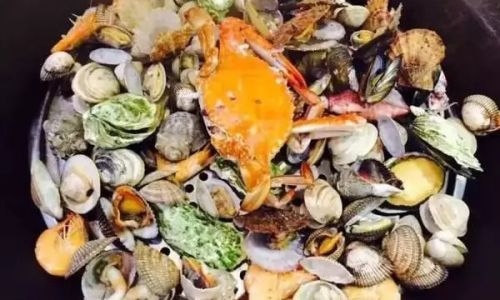
- Mussels (1 kg/2.2 lbs): 5–7 minutes
- Clams (1 kg/2.2 lbs): 8–10 minutes
Discard any that remain closed after cooking.
Octopus
Tenderizing octopus requires precision:
- Small (500 g/1.1 lbs): 20–25 minutes
- Large (1.5 kg/3.3 lbs): 30–35 minutes
Tip: Simmer octopus in water with a wine cork first to tenderize, then steam for flavor infusion.
Advanced Techniques for Perfect Steaming
The “Double-Steam” Method
For extra-large seafood like whole turbot, steam at high heat for 70% of the time, then reduce to low heat to finish gently. This prevents the exterior from overcooking.
Ice Bath Reset
After steaming, plunge seafood into an ice bath for 1–2 minutes. This halts cooking and firms the meat, making it easier to handle (e.g., for crab legs or lobster).
Aromatic Infusions
Add herbs, citrus, or wine to the steaming liquid to impart flavor. For example, steam fish with lemongrass and ginger for a Thai-inspired dish.
Pressure Steaming
Using a pressure cooker reduces time by up to 50%. A 1 kg lobster cooks in 6–8 minutes under pressure.
Common Mistakes and How to Avoid Them
-
Overcrowding the Steamer:
Stacking seafood traps steam, creating uneven cooking. Leave space between pieces. -
Ignoring Thickness:
A 5 cm fish fillet cannot cook in the same time as a 2.5 cm one. Use a ruler to measure thickness. -
Opening the Lid Frequently:
Each peek releases steam and lowers the temperature, increasing cooking time. -
Relying Solely on Time:
Use visual and tactile cues. Fish should flake easily; lobster meat should be opaque and firm. -
Skipping Resting Time:
Let steamed seafood rest for 3–5 minutes after cooking. Residual heat continues cooking gently.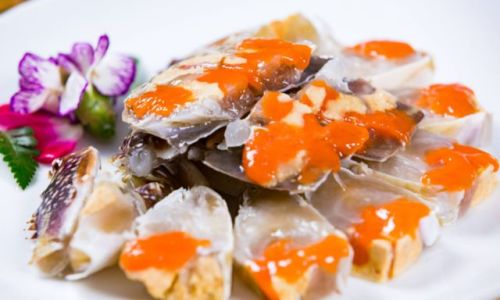
Tools and Equipment for Steaming
-
Bamboo Steamer:
Ideal for delicate flavors. Layer with cabbage leaves to prevent sticking. -
Stainless Steel Steamer:
Durable and easy to clean. Works on any stovetop. -
Electric Food Steamer:
Programmable settings for precise control. -
Oven with Steam Function:
Combines convection heat with steam for professional results. -
Pressure Cooker:
Speeds up cooking while retaining moisture.
Pairing Steamed Seafood with Sauces and Sides
Steamed seafood’s mild flavor pairs well with vibrant sauces:
- Lemon-Butter Sauce: Classic for lobster and crab.
- Soy-Ginger Dip: Enhances steamed fish.
- Chili-Garlic Oil: Adds heat to mussels and clams.
Serve with sides like steamed rice, roasted vegetables, or crusty bread to soak up juices.
Health and Safety Considerations
- Internal Temperature: Use a thermometer. Fish should reach 63°C (145°F), shellfish 74°C (165°F).
- Cross-Contamination: Use separate utensils for raw and cooked seafood.
- Shellfish Allergies: Clearly label dishes containing crustaceans or mollusks.
Conclusion
Steaming large seafood is a balance of science and intuition. By understanding the interplay of species, size, and equipment, and by mastering timing techniques, even novice cooks can achieve restaurant-quality results. Remember that practice is key—experiment with different seafood varieties and adjust times based on your tools and preferences. Whether you’re hosting a seafood feast or preparing a weeknight dinner, the art of steaming will elevate your culinary repertoire, delivering dishes that are as healthy as they are delicious.
Final Tip: Keep a detailed log of your steaming experiments. Note the species, weight, equipment, and time. Over time, this journal will become your personal guide to steaming perfection.
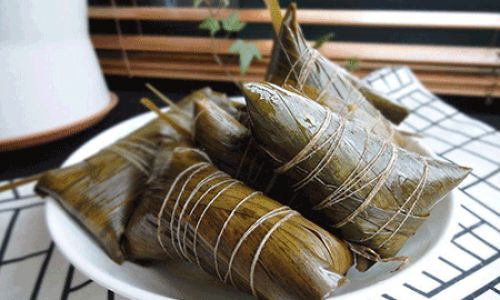
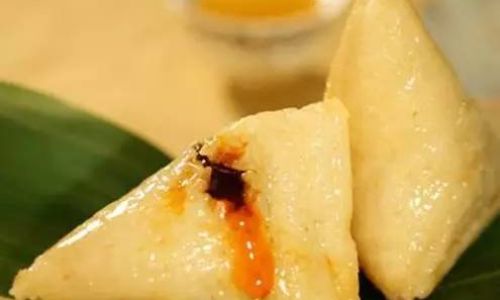
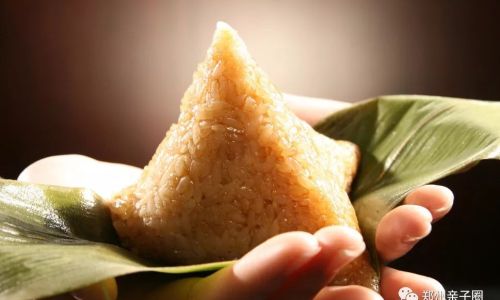
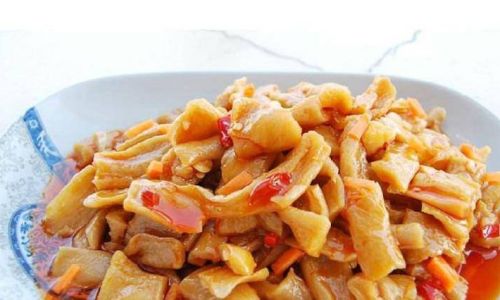
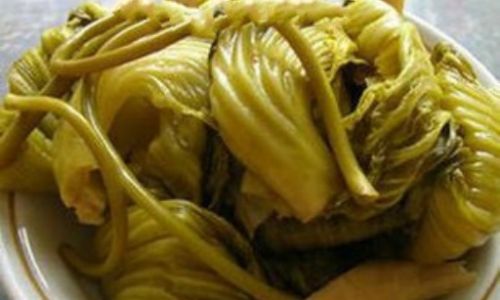
0 comments